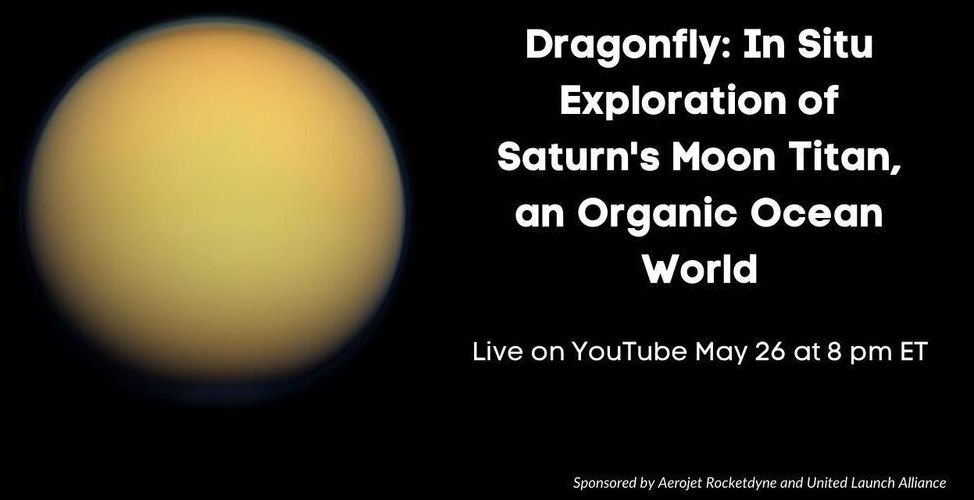Wednesday, May 26 at 8 pm ET, discover what we hope to learn about Saturn’s fascinating moon Titan, featuring planetary scientist Zibi Turtle. Register: https://s.si.edu/2Q58d9N
Saturn’s largest moon, Titan, is an ocean world with a dense atmosphere, abundant complex organic material on its icy surface, and a liquid-water ocean in its interior. The Cassini-Huygens mission revealed Titan to be surprisingly Earth-like, with active geological processes and opportunities for organic material to have mixed with liquid water on the surface in the past. These attributes make Titan a unique destination to seek answers to fundamental questions about what makes a planet or moon habitable and about the pre-biotic chemical processes that led to the development of life here on Earth.
NASA’s upcoming Dragonfly New Frontiers mission is a rotorcraft lander designed to perform long-range in situ investigation of the chemistry and habitability of this fascinating extraterrestrial environment. In this program, Planetary scientist Zibi Turtle from the Johns Hopkins Applied Physics Laboratory will discuss this fascinating new mission: Taking advantage of Titan’s dense atmosphere and low gravity, Dragonfly will fly from place to place, exploring diverse geological settings to measure the compositions of surface materials and observe Titan’s geology and meteorology. Dragonfly will make multidisciplinary science measurements at dozens of sites, traveling ~100 miles during a 3-year mission to characterize Titan’s habitability and to determine how far organic chemistry has progressed in environments that provide key ingredients for life.
The Exploring Space Lecture Series is made possible by the generous support of Aerojet Rocketdyne and United Launch Alliance.
